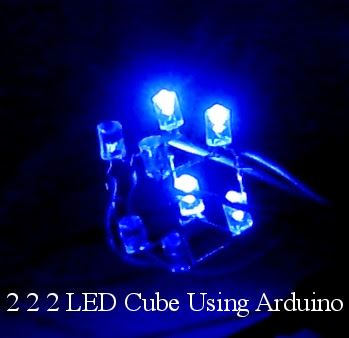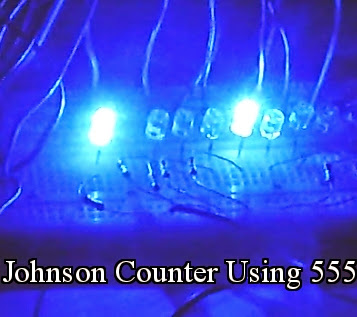We had already discussed the topic on controlling seven segment display using 4511 Driver IC in the previous tutorials . Here we are going to discuss, how seven segment display can be controlled using 74HC595 IC and Arduino. Circuit is done as shown in the following image. Pin 11 (SH_CP), Pin 12 (ST_CP) and Pin 14 (DS) of 74595 IC is connected to the Pin 13, Pin12 and Pin11 of Arduino board respectively.
Important : Seven Segment Display should be common cathode display.
Following table shows the states of Q0-Q7 pins of 74HC595 IC to display numbers from 0 to 9. To display a particular number in seven segment display, corresponding EQUIVALENT DECIMAL (column before last column) should be shifted out from Arduino.
Upload the following program to arduino board. Following program displays from 0 to 9 in the seven segment display.
//Pin connected to ST_CP of 74HC595
int latchPin = 12;
//Pin connected to SH_CP of 74HC595
int clockPin = 13;
////Pin connected to DS of 74HC595
int dataPin = 11;
void setup() {
//set pins to output so you can control the shift register
pinMode(latchPin, OUTPUT);
pinMode(clockPin, OUTPUT);
pinMode(dataPin, OUTPUT);
}
void loop()
{
// Decimal 63 Binary output 01111111 Displays 0
digitalWrite(latchPin, LOW);
shiftOut(dataPin, clockPin, MSBFIRST, 63);
digitalWrite(latchPin, HIGH);
delay(1000);
// Decimal 6 Binary output 00000110 Displays 1
digitalWrite(latchPin, LOW);
shiftOut(dataPin, clockPin, MSBFIRST, 6);
digitalWrite(latchPin, HIGH);
delay(1000);
// Decimal 91 Binary output 01011011 Displays 2
digitalWrite(latchPin, LOW);
shiftOut(dataPin, clockPin, MSBFIRST, 91);
digitalWrite(latchPin, HIGH);
delay(1000);
// Decimal 79 Binary output 01001111 Displays 3
digitalWrite(latchPin, LOW);
shiftOut(dataPin, clockPin, MSBFIRST, 79);
digitalWrite(latchPin, HIGH);
delay(1000);
// Decimal 102 Binary output 01101010 Displays 4
digitalWrite(latchPin, LOW);
shiftOut(dataPin, clockPin, MSBFIRST, 102);
digitalWrite(latchPin, HIGH);
delay(1000);
// Decimal 109 Binary output 01101101 Displays 5
digitalWrite(latchPin, LOW);
shiftOut(dataPin, clockPin, MSBFIRST, 109);
digitalWrite(latchPin, HIGH);
delay(1000);
// Decimal 125 Binary output 01111101 Displays 6
digitalWrite(latchPin, LOW);
shiftOut(dataPin, clockPin, MSBFIRST, 125);
digitalWrite(latchPin, HIGH);
delay(1000);
// Decimal 7 Binary output 00000111 Displays 7
digitalWrite(latchPin, LOW);
shiftOut(dataPin, clockPin, MSBFIRST, 7);
digitalWrite(latchPin, HIGH);
delay(1000);
// Decimal 127 Binary output 01111111 Displays 8
digitalWrite(latchPin, LOW);
shiftOut(dataPin, clockPin, MSBFIRST, 127);
digitalWrite(latchPin, HIGH);
delay(1000);
// Decimal 102 Binary output 01101111 Displays 9
digitalWrite(latchPin, LOW);
shiftOut(dataPin, clockPin, MSBFIRST, 111);
digitalWrite(latchPin, HIGH);
delay(1000);
}
Output of the above program will be as shown in following image.








Amazing Tutorial
ReplyDelete// Decimal 102 Binary output 01101010 Displays 4
ReplyDelete01101010 - wrong value, should be 01100110